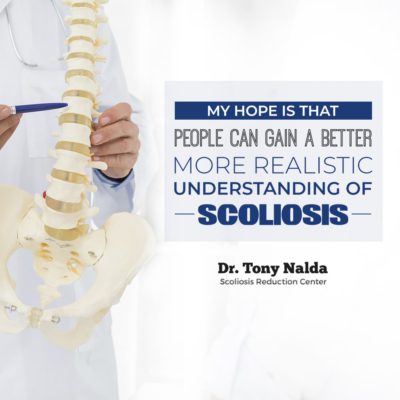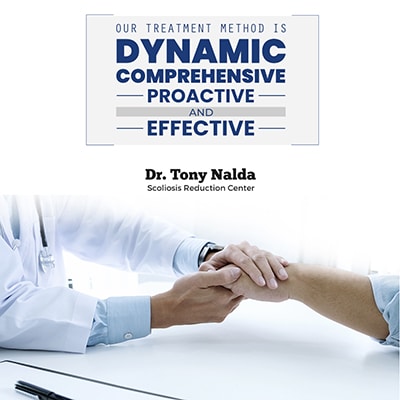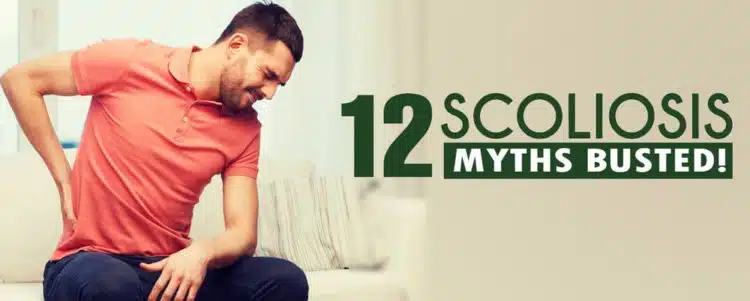As an expert on scoliosis and scoliosis treatment, I encounter a number of myths and misconceptions on an almost daily basis. People often come to me confused and scared about the condition, and the research they’ve done typically contains just as much falsehood as it does truth.

My last blog post covered the fears that patients and parents commonly encounter, and I debunked many of the more persistent myths in that piece. But I think it’s important to continue the discussion, simply because there there are so many misconceptions out there!
My hope is that people can gain a better, more realistic understanding of scoliosis. I want them to honestly understand what the condition means for both young people and adults. I see far too many people taking the “watch-and-wait” approach without ever questioning the conventional wisdom they are given. They don’t know that effective alternative treatments are available. And they see no reason not to believe the myths and misconceptions that surround scoliosis.
Of course, it’s impossible, given the sheer number of misconceptions that exist, to bust all of them. But the following scoliosis myths are the ones I discuss with patients most frequently.
Myth #1 — “Scoliosis Is Caused By…”
There are a lot of ideas out there regarding the causes of scoliosis — and most of them are wrong!
Carrying a heavy backpack does not cause scoliosis. Nor does participating in certain physical activities. The list goes on and on.
Whenever you hear or read information that purports to know the cause of scoliosis, you should be skeptical. The fact is that the vast majority of scoliosis cases are idiopathic, which means there is no known cause. A multitude of factors contribute to the development of the condition.
Myth #2 — Scoliosis Is Preventable
Again, because we don’t know exactly what causes most cases of scoliosis, we cannot engage in methods to prevent it from occurring. There is no diet, type of exercise or lifestyle practice that will stave off the condition. The best we can do is take a proactive approach to treatment once the condition has been diagnosed. Thankfully, treatments like those we provide here at the Scoliosis Reduction Center® are highly effective and can even reduce curvatures.
Myth #3 — Scoliosis Makes the Body Weak and Frail
An abnormal curvature of the spine does not equate to a decrease in strength or bone density. In fact, people with scoliosis can be just as capable, strong and fit as anyone else.
Myth #4 — Scoliosis Can Cause Organ Failure
One of the more popular scoliosis misconceptions is that the curvature of the spine can press into organs, causing them to fail. This just isn’t true. As the spine curves and twists, so does everything else in the body. In most cases, the spine actually curves away from the heart and other vital organs.
This being said, scoliosis can cause some lung deficiencies, but not because of the spine pushing on the lungs. Instead, this is caused by the increased rigidity present in the body, particularly when taking the “watch-and-wait” approach.
Myth #5 — Women With Scoliosis Can’t Have Children
I addressed this in my previous blog post, but it bears repeating since it’s such a commonly accepted piece of misinformation: scoliosis does not prevent conception or a healthy birth. It does not diminish fertility in any way, nor does it increase the possibility of miscarriage. There is no difference between women with scoliosis and women without scoliosis when it comes to the ability to conceive and bear healthy children.
Myth #6 — Young People with Scoliosis Can’t Participate in Sports
I actually prefer it when young people with scoliosis participate in sports and other physical activities. We want them to be active! The stronger, more balanced and more coordinated they are, the better the results we can get from treatment.
Myth #7 — Scoliosis Is Always Painful

Yes, scoliosis can cause pain in adult patients, but for young people, pain is usually not a factor. This is because the upward motion of the spine’s growth in adolescence actually relieves the pressure that might otherwise cause pain.
The opposite myth — that scoliosis never causes pain — is also fairly persistent, and equally untrue.
Myth #8 — Traditional Bracing Apparatus Can Correct Scoliosis
Traditional bracing apparatus such as the Boston Brace or Milwaukee Brace are not meant to correct abnormal spinal curvatures. They are used to prevent the worsening of the curvature. Ultimately, those who are prescribed with scoliosis braces and participate in traditional treatments will continue down a path that leads to surgery.
Myth #9 — Children Can “Grow Out of” Their Curves
This misconception is a symptom of the “watch-and-wait” approach that has become the standard of treatment. Certainly, there are some curves that will not progress past adolescence, but no one grows out of an abnormal curvature. When you work to reduce the curve, there is no harm done if it ends up not progressing. But when you fail to engage in treatment, you can actually cause tremendous harm.
Truly, the only chance of a curve being “grown out of” is in the infantile phase. For adolescents or older patients, it’s just not possible that the curve will grow straighter.
Myth #10 — Scoliosis Curves Remain Static in Adulthood
Doctors and orthopedic specialists will often tell patients that once they are adults, they don’t need to worry about the progression of their curvatures. The fact is that curves can continue to progress, even in adulthood once the body has stopped growing.
Myth #11 — Surgery Can Cure Scoliosis
A true scoliosis cure would return the spine’s curvature to normal, but that’s not at all what surgery does. It can relieve pain, stabilize the spine and restore some function, but it’s not a cure. It does not address the underlying causes of the condition; in fact, it can cause new problems for the spine.
Myth #12 — Chiropractic-Centered Treatment Doesn’t Work
This myth is especially popular among scoliosis surgeons, and I understand why they take this position. Providing surgery for scoliosis is their profession and source of income. The presence of effective, alternative treatments is a threat to their livelihoods. So they keep putting patients on the path to surgery, citing the “watch-and-wait” approach as the only sensible form of treatment.
I know better. That’s why we see patients from all around the world here at the Scoliosis Reduction Center®. Our treatment method is dynamic, comprehensive, proactive — and effective. It actually works to reduce curvatures, restore function and help people live their best lives.





